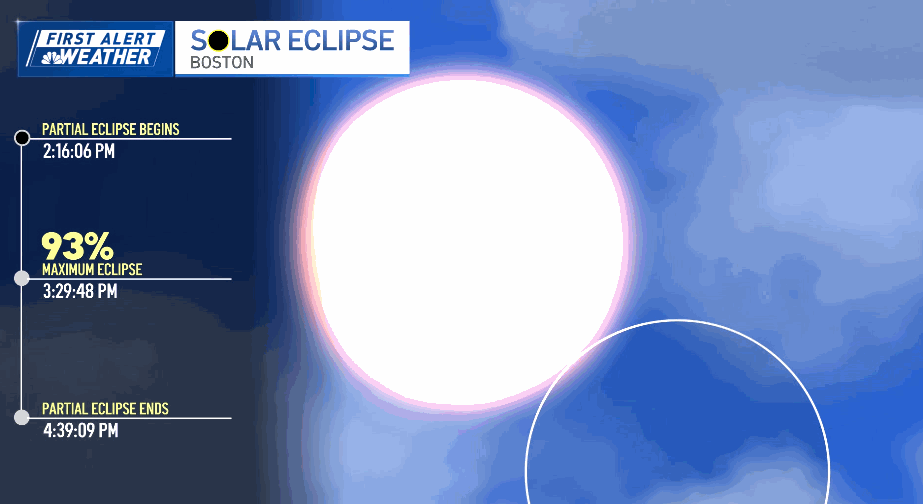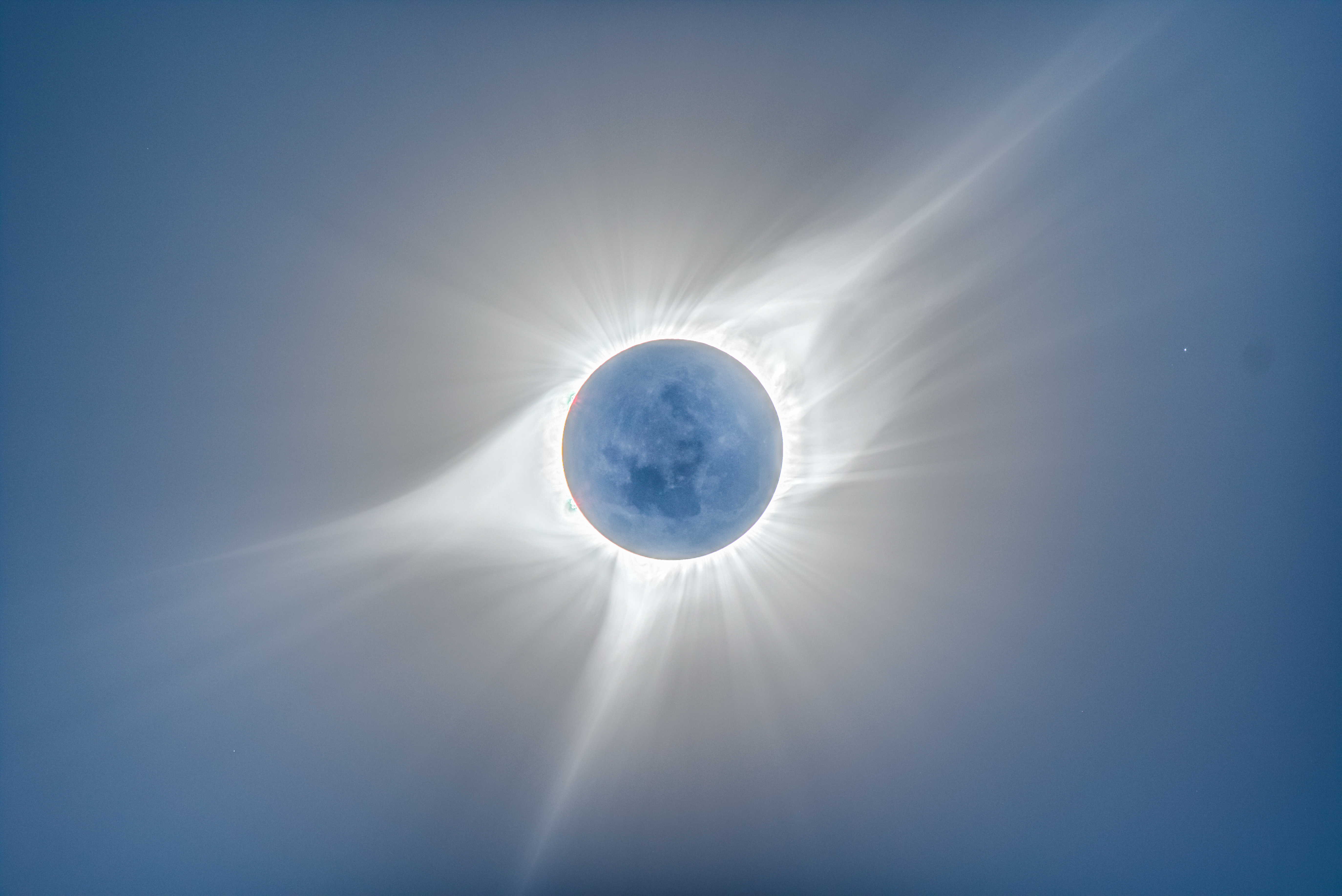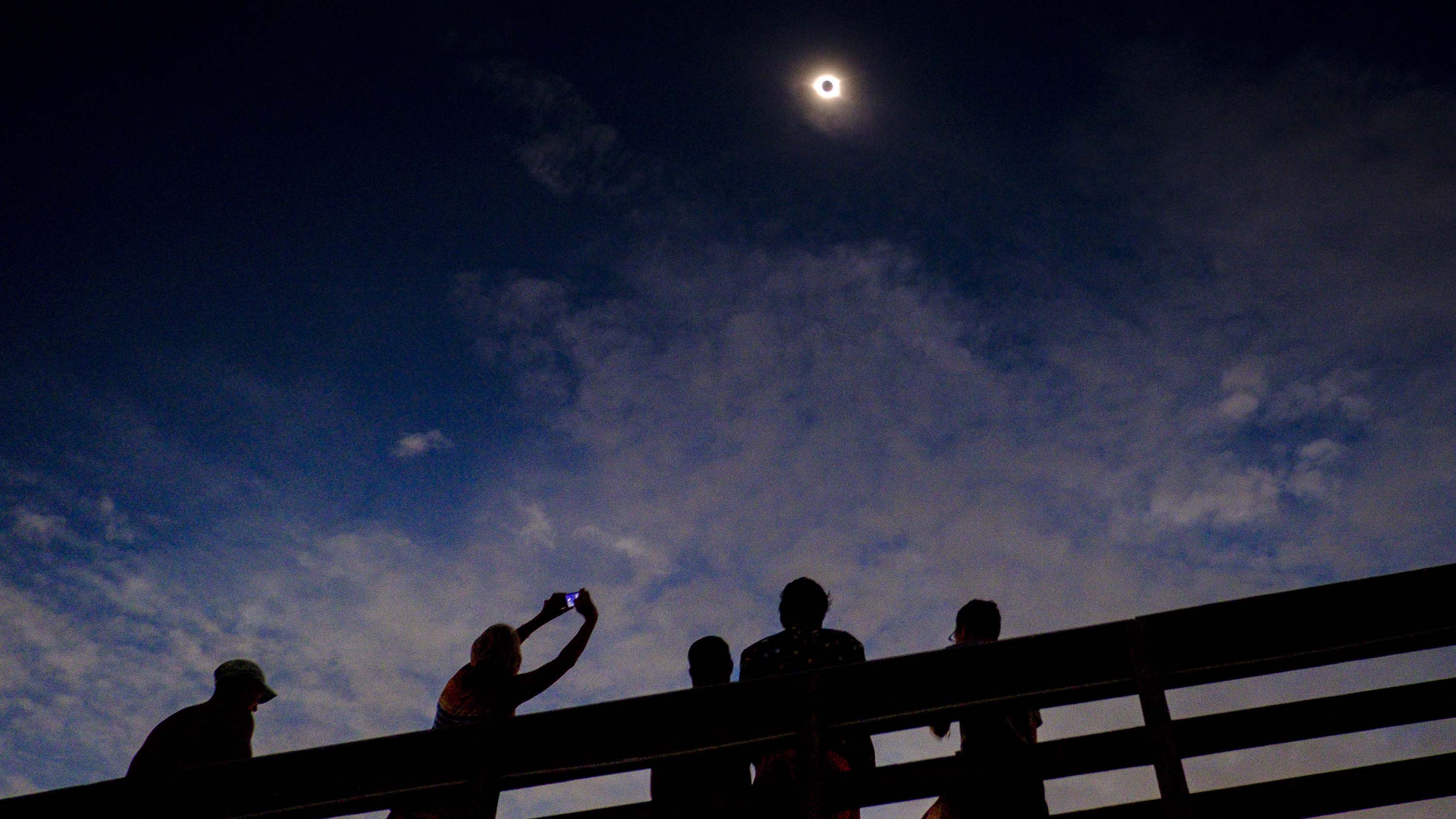The upcoming total solar eclipse is expected to bring thousands of people to New Hampshire, but state officials have an unusual request for many of them: don't leave major highways.
While the eclipse is expected to be a major tourism draw, since northern New England is one of the few places in the Northeast that will be in the eclipse's path of totality, it could be difficult getting around New Hampshire on the day, Monday, April 8, between a high volume of traffic and rough road conditions.
That's why the state Department of Transportation and some law enforcement agencies are urging the people who visit Coos County, at the top of New Hampshire, to stay on state highways, rather than secondary highways and local roads, to see the eclipse.
"Some secondary highways and local roads were not designed to handle large volumes of traffic, and springtime in the north country can bring frost heaves and very soft shoulders," read a statement released Monday. "Traffic generated by the solar eclipse will impact roads throughout New Hampshire. Please obey all officers assisting with traffic control as well as all signs and traffic control devices."
Get Boston local news, weather forecasts, lifestyle and entertainment stories to your inbox. Sign up for NBC Boston’s newsletters.
The statement also warned that heavy traffic south could be in store for travelers after the eclipse.
The New Hampshire Department of Transportation expects between 8,000 and 15,000 vehicles to enter the North Country, a spokesman told NBC10 Boston Monday.
Anyone with questions about what to expect in New Hampshire on the day of the eclipse can call 603-223-6169 or email jic@dos.nh.gov, or visit visitnh.gov/solareclipse.
The rare total solar eclipse — the last in the U.S. for decades — will cut across the U.S. from Texas in the south and up through northern Vermont, New Hampshire and Maine.
Tourism officials in all three of those New England states have been preparing for the influx of potentially hundreds of thousands of visitors.
The total solar eclipse is expected to occur between 3:20 and 3:40 p.m., depending on the state, though a partial eclipse will be occur for about an hour before and afterward.
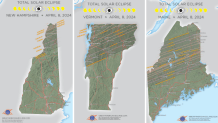
Vermont
The northern half of Vermont will experience a total solar eclipse — it's the most populous part of New England that will experience totality.
State officials have said Burlington on Lake Champlain, the largest city in Vermont, will enjoy about three minutes and 15 seconds of totality. Other cities inside the path are Montpelier, St. Albans City, Williston, Newport and St. Johnsbury.
Between 60,000 and 200,000 people are expected to head to the Green Mountain State to see the celestial phenomenon, the Vermont Agency of Transportation told NBC affiliate WPTZ.
VTrans Director of Finance and Administration Jayna Morse said that visitors can avoid traffic jams by getting in a few days early and leaving a few days late: "We’ve really been pushing the come early, stay late to help alleviate some of the pain points of traffic on those for those who might be coming up just the day of the eclipse."
Maine
Houlton, Maine, is the last town in the continental U.S. that will see the total solar eclipse — but the period of total darkness will largely go over small towns and uninhabited areas. Portland, Augusta and other bigger cities are too far south to experience totality.
While the state's highest mountain, Katahdin, will be in the path of totality, there will be limited access to Baxter State Park, where the peak is located, and no access to Katahdin itself.
For people heading to northern Maine for the eclipse, the Maine Department of Transportation has shared similar advice as those in New Hampshire and Vermont: "plan ahead, arrive early, and stay late."
What time will the eclipse take place
Here's a minute-by-minute account of how the eclipse will play out in Burlington, the largest New England city in the path of totality:
2:14 p.m.—Partial eclipse begins—The moment the edge of the moon touches the edge of the sun.
2:36 p.m.—Obscuration around 20%—One-fifth of the area of the Sun's disk is covered by the moon.
2:43 p.m.—Temperature changes—As the moon covers the sun, the amount of solar energy decreases.
2:57 p.m.—the brightness of the sky—as the eclipse progresses, the sky becomes noticeably darker.
3:18 p.m.— the reaction of nature—The behavior of animals and plants starts to be affected by falling levels of light.
3:25 p.m. – The corona, or the outer part of the sun's atmosphere, becomes visible and forms a ring around the moon. This is known as the diamond ring.
3:26 p.m. – TOTALITY BEGINS the edge of the moon covers all of the sun. A red layer of the sun's atmosphere is briefly visible.
3:27 p.m. – Maximum eclipse, the deepest point of the eclipse occurs with the sun mostly hidden. In other regions in totality, the sun will be totally covered. ONLY in totality is it safe to take off eclipse glasses. This period lasts for nearly 3-4 minutes depending on region.
3:29 p.m. – TOTALITY ENDS just before the end of totality; the chromosphere briefly reappears. Then the moon exposes the sun.
3:29 p.m. – Dark shadow sweeps out; the moon's umbral shadow moves east.
3:36 p.m. – Nature returns to normal. Animals return to usual behavior.
3:50 p.m. – light levels and temperatures, the conditions of the sky and surroundings return to normal.
4:37 p.m. – partial eclipse ends, the edge of the moon leaves the edge of the sun.
How cloudy will it be in New England for the solar eclipse?
The million-dollar question is, how cloudy will New England get on April 8? Historically, Boston has been cloudy on this day 61% of the time (since 2000) and Burlington this day has been cloudy 69% of the time. That said, last year there were clear to mostly clear conditions on the day.
While longer range forecasting doesn’t carry the highest level of confidence, the trends are to at the very least have partly cloudy skies.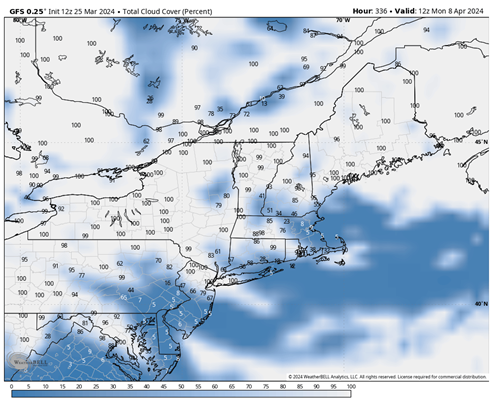
Monday morning, clouds are breaking across Southern New England.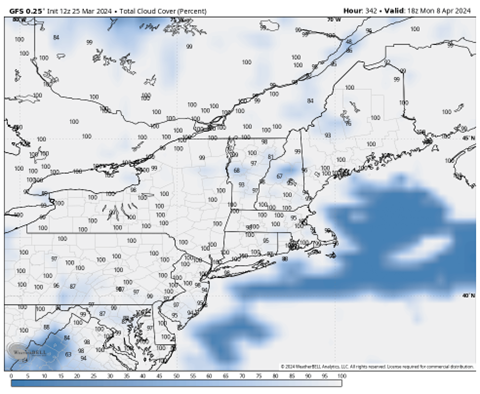
Monday afternoon clouds build up for much of New England.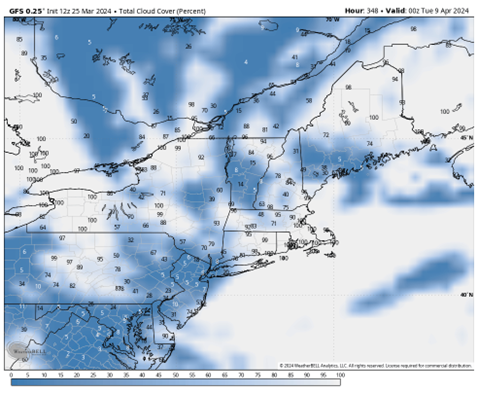
Monday night clouds are breaking apart through Northern New England.

